Text
Booty-ero
Adan y Eva
Abu Ghraib
Donna Allo Specchio
Botero sculpture located in Cartagena
Passionate, political, and a purveyor of very pronounced figures, Fernando Botero is a mASSter of tying together the body politic into a politicized body. Botero, who is self-titled “the most Colombian of Colombian artists,” is known for exaggeration; his figures, whether they are of people, places, and/or objects, are recognized by their large, almost swollen, proportions. Depending on the piece, these figures and their abundance are either used for political criticism or humor. In 2005, Botero’s “fat” figures were used as part of a series depicting the accounts of prisoner abuse at Abu Ghraib prison, yet a year later, after focusing exclusively on this subject, the artist went on to crate a series devoted to themes of family. While his subjects vary, Botero’s style is consistent. He is also a versatile artist, operating in both the mediums of painting and sculpture. Much like what Rubens demonstrated three centuries earlier, Botero was not afraid to embrace the full figured in his work; yet unlike his predecessor, he did not limit his “Boterismo” to just the female figures, instead enlarging his world to fit the forms and messages that inspired him.
-M
4 notes
·
View notes
Text
Fauve-rite Fannies

La Coiffeur

Nude with heel on her knee
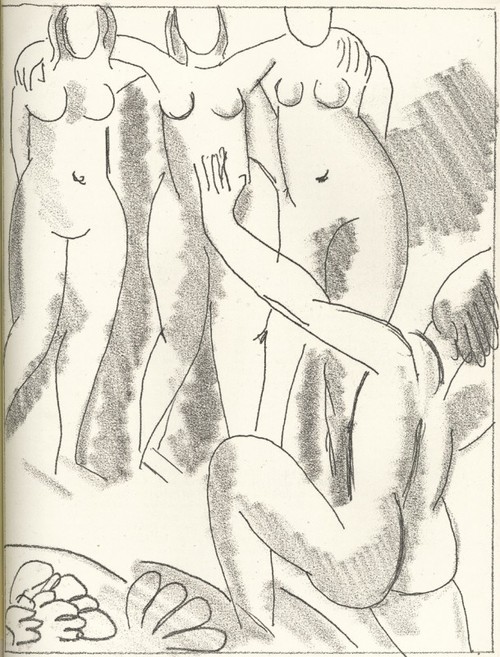
Odysseus and Nausicaa

Le Bonheur de Vivre

Bather
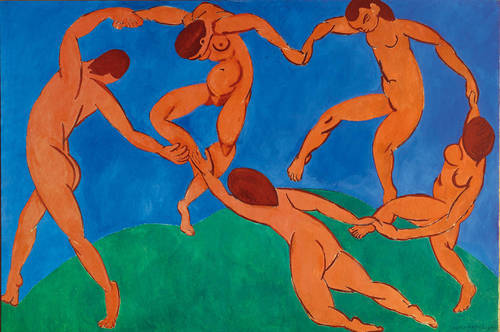
The Dance

Pastoral

The Dance
The next modern mASSter we shall look at is the artist Matisse. Henri Matisse is a major figure associated with the movement “Fauvism;” fauve, French for “the wild beasts,” was the word critics at the time employed derisively to describe the works of the associated artists. With bold, often contrasting colors, large planes, and stylized figures, the Fauvists were more concerned with expressing the painterly qualities of their work and the emotional impact of color over representational or realistic depictions of people and places. Matisse, who is one of if not the leading figure of the movement, created works in paint (and in his later life paper collage) that were brightly colorful, often displaying human figures in dynamic movements and/or landscapes. As he progressed his figures displayed less detail, often being reduced to highly stylized planes that hinted at figures and spaces while showing off areas of specific colors. Yet, highly detailed or discreetly hinted, the bare behinds of Matisse’s figures are exemplary of his evolutionary style. Like the Fauvist’s view on painting and colors, these daring derrieres exemplify the power color can have visually, the constructed qualities of the painted surface, and the emotional impact all of these qualities can produce within the viewer when put together.
-M
1 note
·
View note
Text
Modern Arse
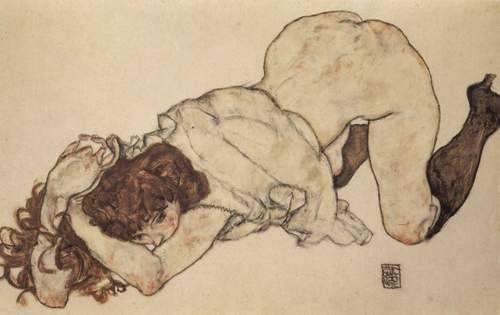
Kneeling girl, resting on both elbows
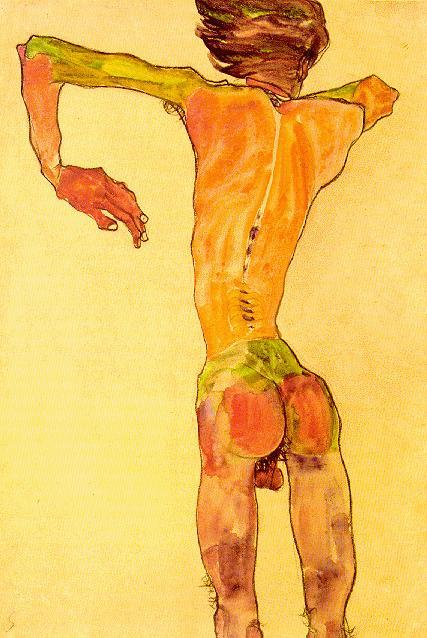
Self Portrait from the back
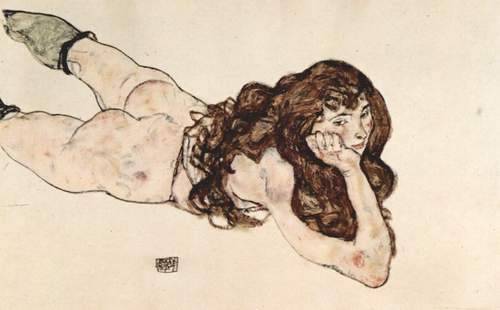
Nude female lying on her stomach

Two Women
Egon Schiele was a painter associated with the Austrian Secession, a protégé of Klimt, and an early exponent of Expressionism. Schiele's figures are contorted, highly sexualized, and what some consider grotesque. While we have up to this point focused on the asses of the "perfect" human forms, it is important to remember that art, like life, embraces everyone and everything. Like the modernist ideas that influenced him, Schiele embraces humanity for what it is; no longer is art just striving for that onward and upward but we are shown the real, the gritty, the non-aesthetically pleasing but the psychologically intriguing. His works are raw and have an impact in many ways that are not seen in the idealized forms of Classically-inspired works, and it is for that reason Schiele will always stand out as a modern mASSter.
-M
0 notes
Text
Those Bawdy Brits

Ah British satirical prints. They have such a subtle way of addressing awkward social situations.
For those who can't see the details in the print, the woman flashing her derriere most likely has some sort of rash that the slack-jawed quack doctor has made a remedy for that he has to apply.
After observing this, I really don't want to know the eighteenth century equivalent of Ben Gay...
Print is The Rise to Rumford by Thomas Rowlandson
-A
2 notes
·
View notes
Text
Even Your Ass Can't Save You

No butts about this painting: Athena is having none of Hep's advances - or his exposed rear.
Whenever I see paintings that include such derriere detail, I always wonder about the model who had to stand there for hours with his butt exposed so the artist could get it juuust right.
Anyways, this is actually quite a racy print, especially if you know anything about mythology. The story basically goes that Athena, merely wanting some new weapons, visits Hephaestus. He falls in love, after being scorned again by another lover, Aphrodite. You think he would have learned, but he tries to pull some moves on Athena anyways (bad idea). She manages to get away, but not without him ejaculating on her leg - which is why in this painting her thigh is exposed (weirdly, this is actually an important part of the story). In disgust she wipes the stuff off on a rag and throws it on the ground. Probably more detail that you ever wanted to read into a painting, but that's mythology for you!
Artwork is Athena Scorning the Advances of Hephaestus by Paris Bordone, mid-sixteenth century.
-A
2 notes
·
View notes
Text
MichelangelOMG!
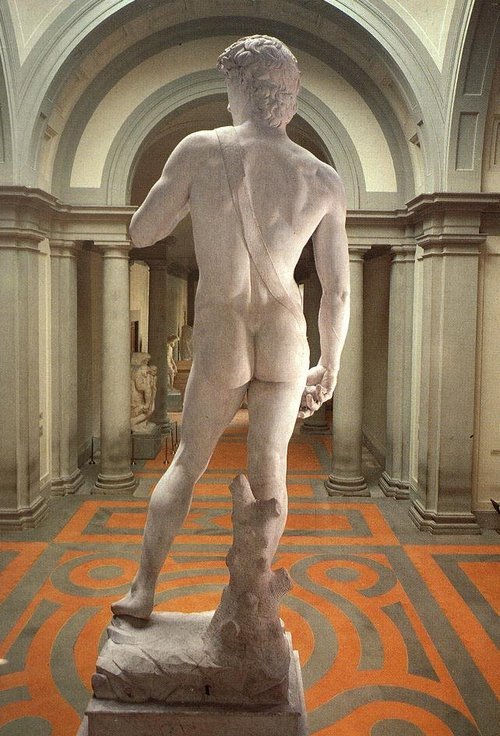
David
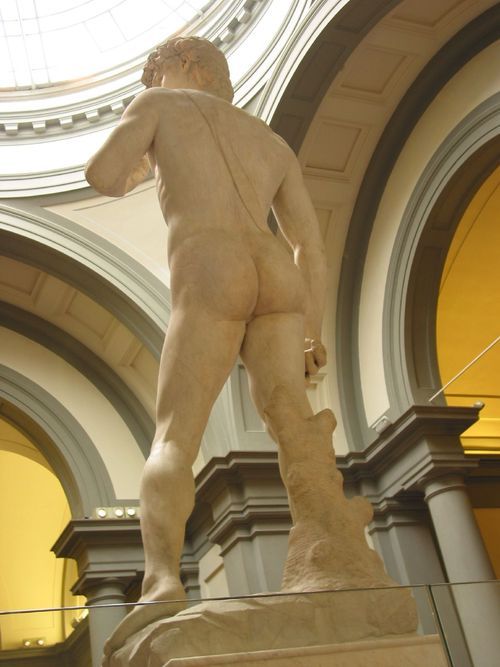
David
What discussion of beautiful mASSterpieces would be complete without a look at Michelangelo's "David?"
Michelangelo, one of the greatest and most well known sculptors/painters of the High Renaissance in Italy originally created "David" as decoration for the Florence Cathedral; yet, because of its immense size it was never installed there. Instead, it occupied many different important sites in Florence throughout its history, eventually finding a permanent home in Florence's Galleria dell'Accademia.
Michelangelo, on the other hand, was one of those rare talents, he could sculpt, he could paint, and on top of all that he had an eye for measurement, estimating almost perfect proportions for his figures without the use of mathematical instruments. It is no where more clear than in the "David" that Michelangelo had such a talent for proportion, as who else could give an ass so perfect to a figure as heroic?
-M
0 notes
Text
If it ain't Baroque...
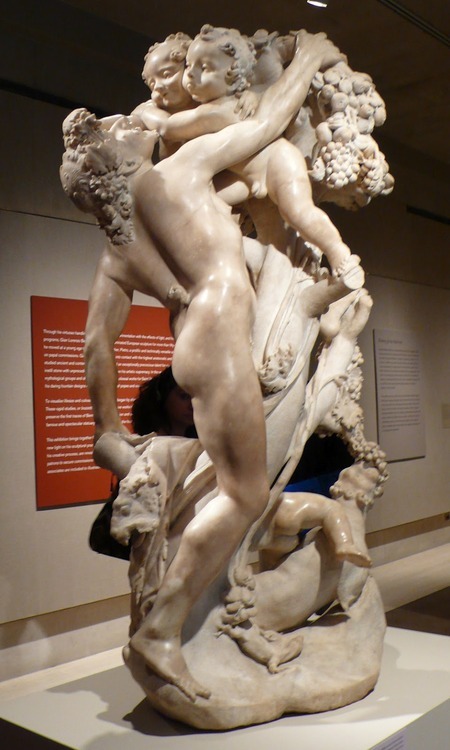
Bacchanal

The Rape of Proserpina
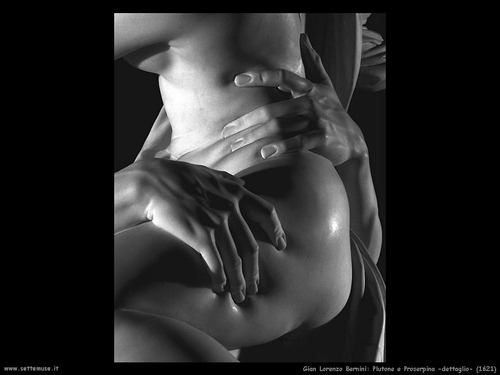
The Rape of Proserpina- detail

Hermaphroditus Asleep
...don't fixate on it! Today we look at the works of Gian Lorenzo Bernini. A poet of marble, this sculptor's mASSterpieces are highly regarded due to the amount of detail he put in to make his figures look as real as possible. Notice on the detail of "The Rape of Proserpina" how the fingers of Pluto sink into Proserpina's skin in a way so firm yet delicate it is almost as if he is gripping flesh itself.
-M
0 notes
Photo

The Greeks knew, probably one of the first people's to have a great appreciation for the fine fannies and delightful derrieres that decorate everything from temples to pottery. Image originally taken from here.
-M
1 note
·
View note